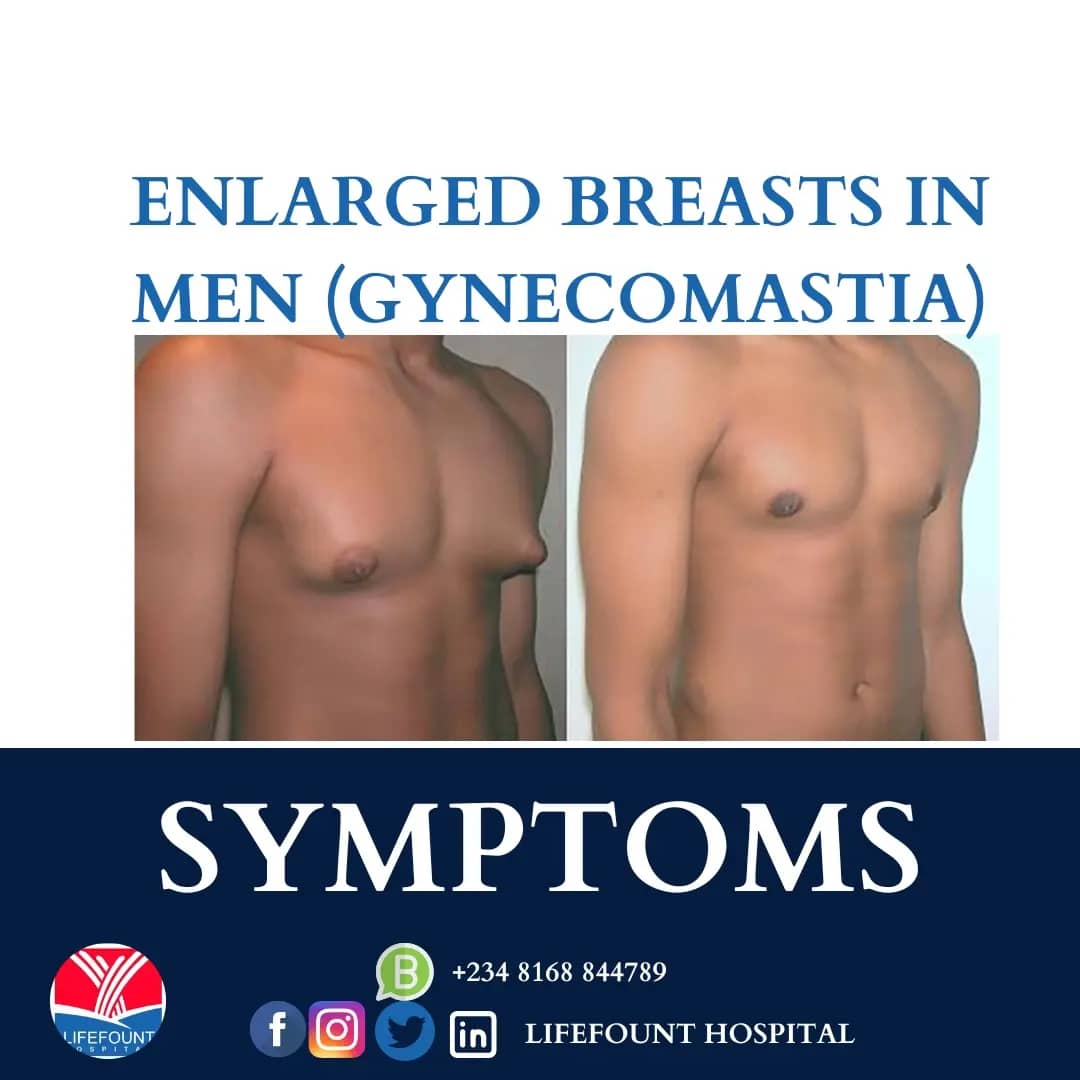Gynecomastia (guy-nuh-koh-MAS-tee-uh) is an increase in the amount of breast gland tissue in boys or men, caused by an imbalance of the hormones estrogen and testosterone. Gynecomastia can affect one or both breasts, sometimes unevenly. Pseudogynecomastia refers to an increase in fat but not glandular tissue in male breasts.
Newborn, boys going through puberty and older men may develop gynecomastia as a result of normal changes in hormone levels, though other causes also exist.
Generally, gynecomastia isn't a serious problem, but it can be tough to cope with the condition. Men and boys with gynecomastia sometimes have pain in their breasts and may feel embarrassed. Gynecomastia may go away on its own but if it persists, medication or surgery may help.
Symptoms of Gynecomastia
Most adult men with gynecomastia report no symptoms. Common symptoms however include:
Pain, particularly in adolescents
Swollen breast tissue
Breast tenderness
Nipple sensitivity with rubbing against clothes.
When should I see a doctor?
You want to see your doctor if you have:
Swelling
Pain or tenderness
Nipple discharge in one or both breasts
Causes of Gynecomastia
Gynecomastia is triggered by a decrease in the amount of the hormone testosterone compared with estrogen. The decrease can be caused by conditions that block the effects of testosterone, reduce testosterone or increase the estrogen level. Several things can upset the hormone balance, including the following:
Natural hormone changes:
The hormones testosterone and estrogen control sex characteristics in both men and women. Testosterone controls male traits, such as muscle mass and body hair. Estrogen controls female traits, including the growth of breasts. Most people think of estrogen as an exclusively female hormone, but men also produce it — though usually in small quantities. Male estrogen levels that are too high or are out of balance with testosterone levels can cause gynecomastia.
Gynecomastia in infants:
More than half of male infants are born with enlarged breasts due to the effects of their mother's estrogen. Generally, the swollen breast tissue goes away within two to three weeks after birth.
Gynecomastia during puberty: Gynecomastia caused by hormone changes during puberty is relatively common. In most cases, the swollen breast tissue will go away without treatment within six months to two years.
Gynecomastia in adults:
Researchers have estimated that the prevalence among men ages 50 to 80 is between 24% and 65%. However, most men with the condition experience no symptoms.
Medications:
A number of medications can cause gynecomastia. These include:
Anti-androgens which is used to treat an enlarged prostate, prostate cancer and other conditions. Examples include flutamide, finasteride (Proscar, Propecia) and spironolactone (Aldactone, Carospir).
Anabolic steroids and androgens to treat hormone deficiencies, delayed puberty, or muscle loss from another disease.
AIDS medications. The estrogen-like properties of some HIV medications can cause gynecomastia, especially Efavirenz (Sustiva).
ADHD medications that contain amphetamines, such as Adderall.
Anti-anxiety medications, such as diazepam (Valium).
Tricyclic antidepressants.
Antibiotics.
Ulcer medications, such as the over-the-counter drug cimetidine (Tagamet HB).
Chemotherapy to treat cancer.
Heart medications, such as digoxin (Lanoxin) and calcium channel blockers.
Stomach-emptying medications, such as metoclopramide (Reglan).
Recreational drugs, illicit drugs and alcohol.
Substances that can cause gynecomastia Certain substances also cause gynecomastia. These include:
Alcohol
Anabolic steroids used to build muscle and enhance athletic performance
Amphetamines
Marijuana
Heroin
Methadone (Methadose)
Health conditions and Gynecomastia
Several health conditions can cause gynecomastia by affecting the balance of hormones. These include:
Hypogonadism: Conditions that lower testosterone production, such as Klinefelter syndrome or pituitary insufficiency, can be associated with gynecomastia.
Aging: Hormone changes that occur with aging can cause gynecomastia, especially in men who are overweight.
Tumors: Some tumors, such as those involving the testes, adrenal glands or pituitary gland, can produce hormones that alter the male-female hormone balance.
Hyperthyroidism: In this condition, the thyroid gland produces too much of the hormone thyroxine.
Kidney failure: About half the people being treated with dialysis experience gynecomastia due to hormonal changes.
Liver failure and cirrhosis: Changes in hormone levels related to liver problems and cirrhosis medications are associated with gynecomastia.
Malnutrition and starvation: When your body is deprived of adequate nutrition, testosterone levels drop while estrogen levels remain the same, causing a hormonal imbalance. Gynecomastia can also happen when normal nutrition resumes.
Risk factors
Risk factors for gynecomastia include:
Adolescence
Older age
Use of anabolic steroids to enhance athletic performance
Certain health conditions, including liver and kidney disease, thyroid disease, hormonally active tumors, and Klinefelter syndrome
Complications
Gynecomastia has few physical complications, but it can cause psychological or emotional problems caused by appearance.
Prevention
There are a few factors you can control that may reduce the risk of gynecomastia:
Don't use drugs. Examples include anabolic steroids, amphetamines, heroin and marijuana.
Avoid alcohol. Don't drink alcohol. If you do drink, do so in moderation.
Put a call across to a qualified doctor should you notice any of the listed symptoms. You can also get an online consultation. Send a dm to +234 816 884 4789 to commence your paid online consultation.
